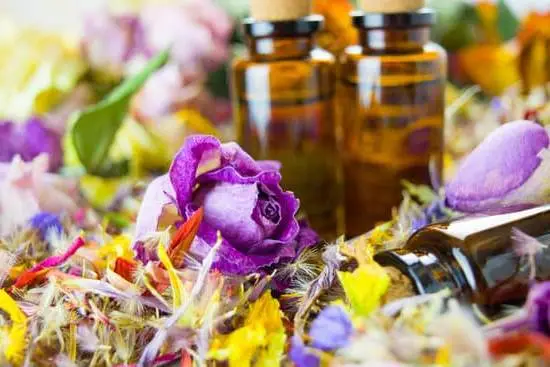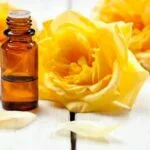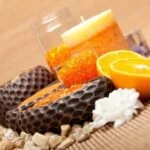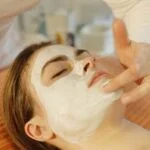Are you interested in learning how to make aromatherapy creams and lotions? Aromatherapy is the use of natural plant extracts and essential oils to promote health and well-being. In this article, we will explore the basics of aromatherapy and its benefits, as well as provide a step-by-step guide on how to create your own aromatherapy creams and lotions at home.
Aromatherapy has been used for centuries as a natural way to improve physical, emotional, and mental health. Essential oils derived from plants are known for their therapeutic properties, such as relaxation, stress relief, and mood enhancement. By incorporating these essential oils into creams and lotions, you can experience the benefits of aromatherapy through topical application.
Understanding the basics of aromatherapy creams and lotions is essential for creating effective products. By selecting the right combination of essential oils and carrier oils, you can tailor your creations to address specific skin care needs or achieve desired aromatherapy effects. In the following sections, we will delve into the properties of essential oils, choosing suitable carrier oils, and providing tips for blending oils effectively.
Understanding the Basics of Aromatherapy Creams and Lotions
Aromatherapy is the use of essential oils to promote physical and psychological well-being. Aromatherapy creams and lotions are a popular way to experience the benefits of essential oils through topical application. These products not only smell great, but they can also provide various therapeutic effects, depending on the essential oil used.
When making aromatherapy creams and lotions, it is important to understand the basics of aromatherapy and how essential oils work. Essential oils are highly concentrated plant extracts that have been used for centuries for their healing properties. Each essential oil has its own unique aroma and therapeutic properties, which can range from relaxation and stress relief to pain relief and skin rejuvenation.
To make your own aromatherapy creams and lotions at home, you will need to choose the right carrier oils that will act as a base for your product. Carrier oils are vegetable oils derived from the fatty portions of plants, such as seeds, kernels or nuts. They help dilute the essential oils and carry them into the skin.
Some popular carrier oils include coconut oil, almond oil, jojoba oil, and olive oil. Depending on your skin type and the desired effect of your aromatherapy cream or lotion, you will need to select the most suitable carrier oil.
In addition to carrier oils, you will also need beeswax or other emulsifiers to create a creamy texture for your aromatherapy cream or lotion. Understanding the basics of creating these products is essential before delving into the step-by-step process of making them at home.
| Essential Oil | Therapeutic Properties |
|---|---|
| Lavender | Calming, soothing, promotes relaxation |
| Peppermint | Energizing, refreshing, relieves headaches |
| Tea Tree | Antibacterial, antifungal, helps with acne |
Essential Oils and Their Different Aromatherapy Properties
When it comes to making aromatherapy creams and lotions, understanding the different properties of essential oils is crucial. Each essential oil has its own unique set of therapeutic benefits, and knowing how to properly blend them can enhance the overall effectiveness of your homemade products. Here are some common essential oils and their aromatherapy properties:
- Lavender – Known for its calming and relaxing effects, lavender oil is often used to alleviate stress, anxiety, and insomnia. It also has anti-inflammatory properties, making it beneficial for soothing skin irritation.
- Peppermint – With its invigorating and uplifting scent, peppermint oil is great for boosting energy levels and improving mental clarity. It also has cooling properties that can relieve muscle pain and headaches.
- Tea Tree – Highly regarded for its antibacterial and antifungal properties, tea tree oil is commonly used in skincare products to treat acne, eczema, and other skin conditions. It also has a fresh, medicinal aroma that promotes a sense of cleanliness.
In addition to these oils, there are many others with unique properties that can be utilized in aromatherapy creams and lotions. Some oils may have more than one beneficial property, making them versatile for various uses. Understanding the specific benefits of each essential oil will allow you to create customized blends tailored to your needs.
When incorporating essential oils into your homemade creams and lotions, it’s important to consider their individual aromatherapy properties to achieve the desired therapeutic effects. Whether you’re looking to relax, energize, or treat specific skin concerns, the right combination of essential oils can make all the difference.
Choosing the Right Carrier Oils for Aromatherapy Creams and Lotions
When it comes to making aromatherapy creams and lotions, choosing the right carrier oils is crucial to ensure that the final product is effective and safe for use. Carrier oils are used to dilute essential oils before applying them to the skin, and each carrier oil has its own unique properties that can enhance the benefits of aromatherapy.
Considerations When Choosing Carrier Oils
When selecting a carrier oil for your aromatherapy creams and lotions, it’s important to consider factors such as skin type, absorption rate, and therapeutic properties. For example, individuals with dry skin may benefit from heavier oils such as avocado or sweet almond oil, while those with oily or acne-prone skin may find lighter oils like jojoba more suitable.
Additionally, some carrier oils have their own therapeutic properties, such as anti-inflammatory or antioxidant benefits, which can complement the effects of essential oils.
Popular Carrier Oils for Aromatherapy
There are a variety of carrier oils available for use in aromatherapy creams and lotions. Some popular options include coconut oil, grapeseed oil, argan oil, and hemp seed oil. Each of these carrier oils offers its own set of benefits and uses in skincare products. It’s important to research and understand the properties of different carrier oils in order to choose the most appropriate ones for your specific needs.
Blending Carrier Oils
In some cases, using a single carrier oil may not provide all the desired therapeutic benefits. In these instances, it is common to blend different carrier oils together to create a customized base for your aromatherapy creams and lotions. By blending different carrier oils together, you can take advantage of their individual properties and create a well-rounded product that suits your specific skincare needs.
Step-by-Step Guide on Making Aromatherapy Creams and Lotions at Home
Aromatherapy is a practice that uses natural plant extracts to promote health and well-being. Aromatherapy creams and lotions are popular ways to incorporate the benefits of essential oils into your daily skincare routine. Making your own aromatherapy creams and lotions at home can be a fun and rewarding experience. Here’s a step-by-step guide on how to make your own:
1. Gather your ingredients: To make aromatherapy creams and lotions, you will need essential oils, carrier oils, beeswax or shea butter, and optional additives such as vitamin E oil or aloe vera gel.
2. Choose your essential oils: Depending on the benefits you are looking for, choose the essential oils with properties that align with your needs. For example, lavender oil is known for its calming properties, while tea tree oil is popular for its antibacterial and anti-inflammatory effects.
3. Mix and melt: In a double boiler, melt together the carrier oils and beeswax or shea butter until they are fully combined. This will create the base of your aromatherapy cream or lotion.
4. Add essential oils: Once the base is ready, remove it from heat and allow it to cool slightly before adding in your chosen essential oils. Be sure to mix the essential oils in thoroughly to ensure even distribution throughout the mixture.
5. Storage: Transfer your finished aromatherapy cream or lotion into clean, sterilized jars or bottles. Store them in a cool, dark place to preserve their shelf life.
Making aromatherapy creams and lotions at home allows you to customize the scents and benefits according to your preferences. Experiment with different combinations of essential oils and carrier oils to create products that cater specifically to your skin’s needs.
Tips and Tricks for Blending Essential Oils for Aromatherapy
Blending essential oils for aromatherapy creams and lotions is an art and a science. The right combination of oils can create a delightful aroma and provide various therapeutic benefits. When blending essential oils, it is important to consider their individual properties and how they work together to achieve the desired effect.
One tip for blending essential oils is to start with a clear intention. Determine what you want the end product to accomplish, whether it’s relaxation, stress relief, or skin nourishment. This will guide your selection of essential oils and help you create a blend that serves its purpose effectively.
Another important trick for blending essential oils is to understand the concept of notes. Essential oils are often categorized as top, middle, or base notes based on their evaporation rates and scent characteristics. When blending, it’s advisable to use a combination of different note types to create a balanced and harmonious aroma profile.
Lastly, always keep track of your recipes when blending essential oils. Record the exact amounts of each oil used in your blends so that you can replicate successful combinations in the future. Additionally, take note of any adverse reactions or negative effects from certain blends so that you can avoid them in the future.
| Tips for Blending Essential Oils | Tricks for Blending Essential Oils |
|---|---|
| Start with a clear intention | Understand the concept of notes |
| Determine the desired effect | Keep track of your recipes |
| Use a combination of different note types | Record exact amounts used in blends |
Storage and Shelf Life of Aromatherapy Creams and Lotions
Proper storage and understanding the shelf life of aromatherapy creams and lotions is essential to ensure their efficacy and safety. Improper storage can lead to the degradation of the essential oils and carrier oils, reducing the therapeutic benefits of the product. In this section, we will delve into the best practices for storing your homemade aromatherapy creams and lotions, as well as understanding their shelf life.
Storage Tips for Aromatherapy Creams and Lotions
Aromatherapy creams and lotions should be stored in a cool, dark place away from direct sunlight and heat. Exposure to light and heat can cause the essential oils to oxidize, leading to a decrease in their potency. It is best to store these products in amber or cobalt glass containers to protect them from light. Additionally, make sure to tightly seal the containers after each use to prevent air exposure.
It is also important to keep aromatherapy creams and lotions away from moisture, as it can introduce bacteria into the product. Store them in a dry environment, such as a cabinet or drawer, to extend their shelf life.
Shelf Life of Aromatherapy Creams and Lotions
The shelf life of homemade aromatherapy creams and lotions varies depending on the ingredients used. Essential oils have different shelf lives ranging from 1-2 years, while carrier oils typically last around 6 months to 1 year. It’s crucial to label your products with the date of creation and expiration to keep track of their shelf life.
When stored properly, most aromatherapy creams and lotions can last between 6 months to 1 year. However, be mindful of any changes in scent or texture, as this may indicate that the product has expired or become rancid.
By following these storage tips and understanding the shelf life of your aromatherapy creams and lotions, you can ensure that they remain potent and effective for a longer period. Proper care will also help preserve their natural properties for optimal aromatherapeutic benefits.
Overall, proper storage is crucial in preserving the integrity of your homemade products so that you can continue enjoying their therapeutic effects for an extended period.
Safety Precautions and Allergies to Consider When Using Aromatherapy Creams and Lotions
In conclusion, making your own aromatherapy creams and lotions at home can be a rewarding and fulfilling experience. Not only do you have the freedom to customize the scents and properties of your products, but you also have the satisfaction of using natural ingredients that are beneficial for your skin and overall well-being. By understanding the basics of aromatherapy and familiarizing yourself with essential oils and carrier oils, you can create personalized skincare products tailored to your specific needs.
It is important to remember that essential oils are potent and should be used with caution. When blending essential oils for aromatherapy, always do a patch test first to check for any allergic reactions.
Additionally, it is crucial to follow safety precautions such as diluting essential oils properly and storing aromatherapy creams and lotions in a cool, dark place to maintain their effectiveness. By being mindful of these safety measures, you can enjoy the benefits of aromatherapy without compromising your skin’s health.
Lastly, consider consulting with a professional or doing thorough research on essential oil properties and potential allergens before using them in your homemade skincare products. Everyone’s skin reacts differently to certain ingredients, so it’s important to be aware of any potential allergies or sensitivities that may arise when using aromatherapy creams and lotions.
With proper care and knowledge, you can safely incorporate the benefits of aromatherapy into your daily skincare routine while creating products that are both effective and personalized to your preferences.
Frequently Asked Questions
How Do You Make Aromatherapy Lotions?
Making aromatherapy lotions involves blending essential oils with a neutral carrier oil, such as almond or jojoba oil, and mixing in a natural emulsifier like beeswax or shea butter to create a creamy consistency.
How Do You Make Skin Cream With Essential Oils?
To make skin cream with essential oils, you start by melting together beeswax and shea butter, then adding in carrier oils like coconut or avocado oil. Finally, blend in the desired essential oils for their skincare benefits.
How Do You Infuse Essential Oils Into Lotion?
Infusing essential oils into lotion can be done by heating the lotion gently and then adding a few drops of the chosen essential oil. It is important to mix well to ensure even distribution of the scent and properties throughout the lotion.

Are you looking for a natural way to improve your health and wellbeing?
If so, aromatherapy may be the answer for you.





